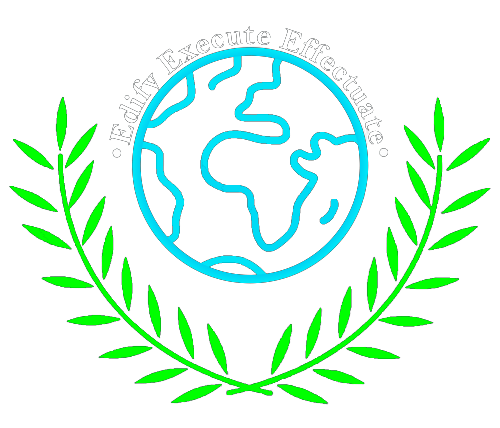By Vedica Karnik
Cinema has played a significant role in giving a voice to Middle Eastern people by providing a platform for filmmakers to express their cultural identity and share their stories with the world. Arab cinema was born at the beginning of the twentieth century and initially consolidated as popular entertainment art and a tool with which to assert Arabs’ group identity in the face of colonial powers. It has emerged as a tool for challenging the prevalent stereotypes and misconceptions about the region and its people, by presenting intricate narratives that go beyond the simplistic misrepresentations often perpetuated in mainstream media (Doane, 1980). Going to see an Egyptian film spoken in Arabic constituted for the populations of the Arab lands as an act of faith and an immersion in their culture and language (Attia, 2016). Over the past decade, film has enjoyed a revival in the Middle East amid a cultural revolution, despite societal challenges (Ajaka, 2016).
In an era of globalization where information is widely accessible, Middle Eastern cinema has allowed people from the region to share their stories, their struggles, and achievements, thereby humanizing the portrayal of Middle Easterners and breaking away from stagnant, distorted images. It captures the multiplicity of the Middle Eastern experience, emphasizing the diversity and dynamism of the region instead of reducing it to monolithic caricatures of conflict and terrorism. The impact is two-fold: it empowers Middle Eastern individuals to assert their identities, while exposing global audiences to alternative narratives that replace homogenized stereotypes with a deeper understanding of the region’s cultural, political and social contexts. The lens of Middle Eastern cinema not only encapsulates the vibrant cultures and traditions unique to the region, but also includes the resilience and strength of its people in the face of adversity. Through the distinctive storytelling of these films, the global audience can gain a nuanced understanding of the rich tapestry of life in the Middle East, and the people who are seldom given a chance to tell their own stories in the global dialogues. Thus, cinema plays a critical and transformative role in amplifying Middle Eastern voices and constructing narratives from the region (Woods, 2019).
The power of cinema as a means to communicate has been effectively utilized to provide a voice for Middle Eastern people, often marginalized in narratives associated with global cultural discourses. Notionally, cinema has the capacity to bring to light the rich culture, profound history, and complex lives of these people. Films like “Zero Dark Thirty” (2012), which chronicled the decade-long hunt for al-Qaeda terrorist leader Osama bin Laden, offers a distinctive perspective on Middle Eastern geopolitics and the subsequent ripple effects on its people (Diaconu, 2016). Similarly, the Turkish film “Mustang” (2015), which narrates the story of five teenage girls navigating the obstacles of tradition and modernity, counters the stereotype of Middle Eastern women, showcasing their dreams, resilience, and fortitude in the face of societal pressures (Dönmez, 2016). However, it’s pivotal to acknowledge the disparity in representation, with a majority of Middle Eastern characters appearing in crime or geopolitical dramas, often as terrorists or villains, reinforcing harmful stereotypes (MCLAUGHLIN, 2015). This has prompted Middle Eastern writers in the US film and TV industry to call for greater representation, demanding characters that reflect the diverse experiences and identities within the Middle Eastern community. While negative stereotypes persist, organizations like Alwan for the Arts, a New York-based organization, working towards promoting Middle Eastern cultures through events and movie screenings, signify a shift towards more authentic portrayals. Therefore, cinema’s role in giving a voice to Middle Eastern people is multi-faceted, serving both to challenge prejudices and to illuminate the complex realities of Middle Eastern lives (ramadan, 2004).
More than often, media has depicted a distorted image of the Middle East, associating the region with terrorism, violence, and cultural oppression, primarily after the 9/11 attacks. Such representation has had severe consequences, including discrimination, racial profiling, and an overall degradation of the Middle Eastern identity. However, cinema has taken up the task of challenging these stereotypes and misconceptions, presenting a more profound insight into the lived experiences of people from this region. Films like “Suleima” have started focusing on the grassroot narratives rather than concentrating on the international political landscape. These films offer a comprehensive understanding of the complexities of the region, its culture, traditions, and the vibrant diversity of Middle Eastern people. “Wadjda” stands as a groundbreaking cinematic achievement, being the first full-length film to emerge from Saudi Arabia’s creative landscape. Behind its creation is the visionary Haifa Almansour, an accomplished Saudi female writer and director. The film revolves around a determined young Saudi girl, resolute in her quest to defy certain societal norms. Central to the tale is her aspiration to buy a bicycle, a simple desire hampered by customary limitations. As the plot unfolds, her journey unfolds — an odyssey entailing her involvement in a Qur’anic recitation contest to win the cash prize. This cinematic masterpiece casts a revealing illumination upon the challenges faced by Saudi women as they navigate the intricate web of societal restrictions.
Organizations such as the MENA Arts Advocacy Coalition are working towards increasing the visibility of Middle Eastern performers, thus providing them with a global platform to challenge narratives and dispel stereotypes (KHATAMI, 2018). Hence, cinema is no longer just a source of entertainment; it is a powerful tool of social commentary and a reflection of the cultural memory of a region, and for the Middle East, it is a platform to voice their experiences, struggles, and triumphs. Consequently, the role of cinema in giving a voice to Middle Eastern people is becoming increasingly significant and impactful. Cinema also holds an influential role in how societies perceive themselves and how they are perceived by others. In the case of Middle Eastern representation, cinema has been examined as a key player in providing a platform for the voices of Middle Eastern people, but its effectiveness and limitations are critical to scrutinize. Films like Yousry Nasrallah’s Cannes-nominated “After the Battle” (2012) have highlighted the complex socio-political dynamics of the Middle East, effectively challenging the monolithic narratives often perpetuated in mainstream media (YOUNG, 2012). However, despite such cinematic breakthroughs, it is important to recognize that a significant proportion of these narratives are still shaped by Western film industries like Hollywood. This extends to the historical and ongoing issues of bias, stereotyping, and orientalism, with Arab and Muslim characters often reduced to harmful caricatures, such as terrorists or oppressed women.
A crucial limitation lies in a lack of diversity and representation within the industry itself. Despite accounting for nearly a quarter of the world’s population, Muslim representation in films is just 1.1% (Robb, 2021). This underrepresentation is further exacerbated by the disproportionate focus on urban settings in cinema, with rural women and other marginalized groups often being neglected.
The impact of cinema in giving a voice to Middle Eastern people goes beyond the films themselves. Events like the Dubai International Film Festival and the Doha Film Institute, dedicated to showcasing Middle Eastern cinema, provide a space for filmmakers and enthusiasts to connect. These events foster a sense of community among Middle Eastern filmmakers and serve as a platform for collaboration on future projects.
Cinema, as a diverse and accessible medium of storytelling and entertainment, holds an intrinsic capacity to shape narratives that capture the complexities of their lives. Cinema has the profound ability to eradicate misconstrued stereotypes, bridging the gulf of cultural misunderstanding that often separates the Middle East from the global community. These films not only facilitate a mutual exchange of cultures and ideas but also enrich our understanding of a region steeped in history, culture, and tradition. Furthermore, the conscious portrayal of relatable characters and authentic narratives fosters empathy, promoting an appreciation for cultural diversity that is needed now more than ever in our increasingly polarized world. Nevertheless, it remains an imperative for cinema to continue its trajectory of inclusivity and accuracy in portraying Middle Eastern narratives. Only then, can we hope to comprehend the true tapestry of the Middle East, in all its beautiful complexity, and strip it of the prejudiced lenses through which it is often viewed. In promoting these diverse, authentic representations, cinema propels an essential dialogue about identity, heritage, and understanding, providing Middle Eastern people with a platform to voice their truths, and inviting the world to listen.

Bibliography
Attia, A. B. (2016, 12 August). Cinema in the Arab World: the Temptation of Identity. Retrieved from IE Med: https://www.iemed.org/publication/cinema-in-the-arab-world-the-temptation-of-identity/
Ajaka, N. (2016, February 28). Theeb and the Renaissance of Arab Cinema. Retrieved from Atlantic: https://www.theatlantic.com/entertainment/archive/2016/02/theeb-and-the-renaissance-of-arab-cinema/471213/
Doane, M. A. (1980). The Voice in the Cinema: The Articulation of Body and Space. Yale University Press, 33-34.
Woods, G. (2019). Adventure, Intrigue, and Terror: Arabs and the Middle East in Hollywood Film Music . Honor Scholar These, 11.
Diaconu, M. (2016). Literature and Democratic Criticism: The Post-9/11 Novel and the Public Sphere. Universität Heidelberg, 131.
Dönmez, S. (2016). Mustang: Film Review. Academia.edu, 1.
MCLAUGHLIN, J. (2015, march 6). The Case for Making Fun of ISIS. Retrieved from MotherJones: https://www.motherjones.com/politics/2015/03/snl-dakota-johnson-isis-middle-east-satirical-cartoons/
ramadan, d. (2004). Alwan for the Arts. Retrieved from Bidoun: https://www.bidoun.org/articles/alwan-for-the-arts
KHATAMI, E. (2018, september 10). Only 1 percent of TV actors are Middle Eastern, North African, reveals first ever study of its kind. Retrieved from ThinkProgress: https://archive.thinkprogress.org/tv-actors-middle-eastern-north-african-representation/
YOUNG, D. (2012, May 17). After the Battle: Cannes Review. Retrieved from The Hollywood Reporter: https://www.hollywoodreporter.com/movies/movie-reviews/after-the-battle-cannes-review-325895/
Robb, D. (2021, june 10). Muslims Underrepresented And Stereotyped In Top-Grossing Films, USC Annenberg Report Finds. Retrieved from Deadlin.com: https://deadline.com/2021/06/muslims-hollywood-movies-study-stereotyped-underrepresented-1234772495/




